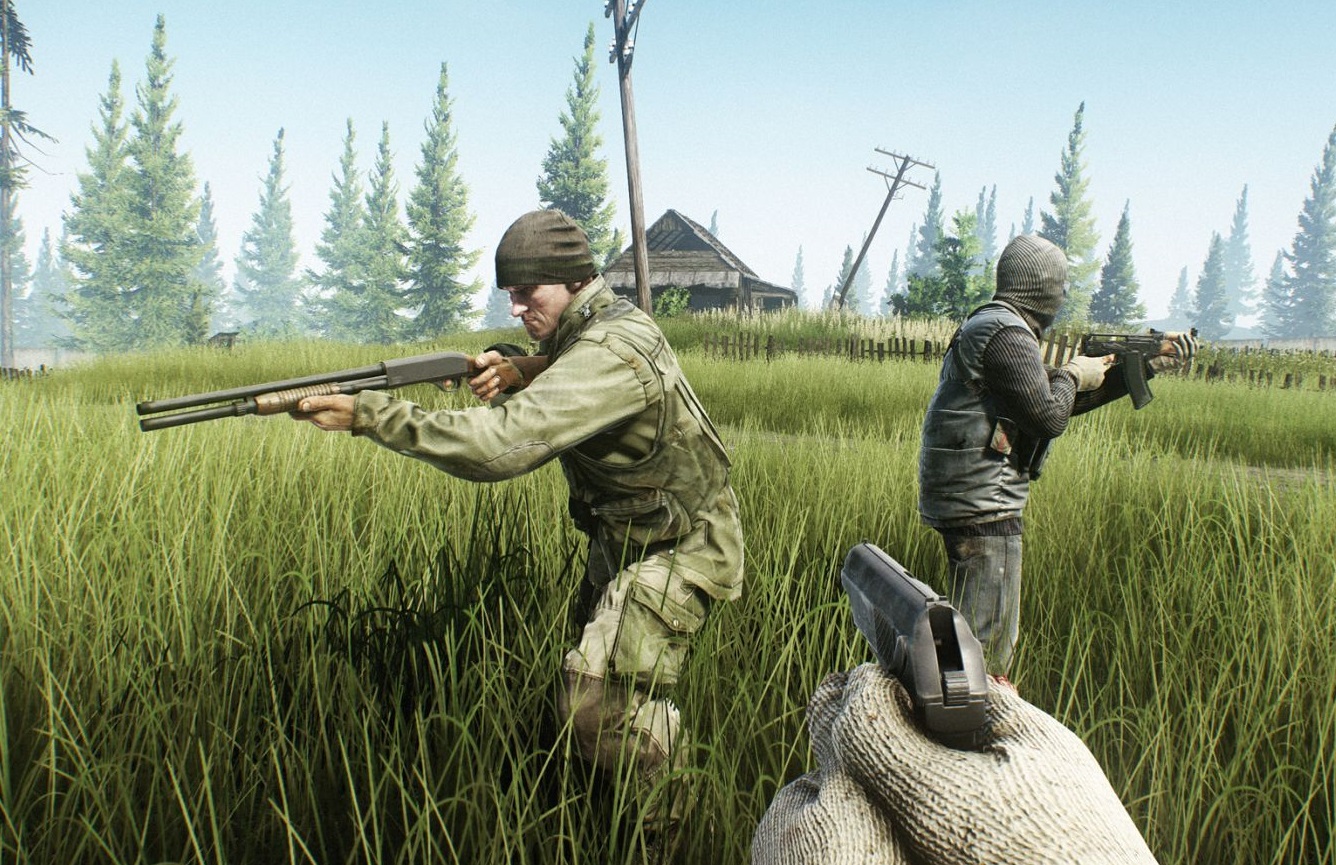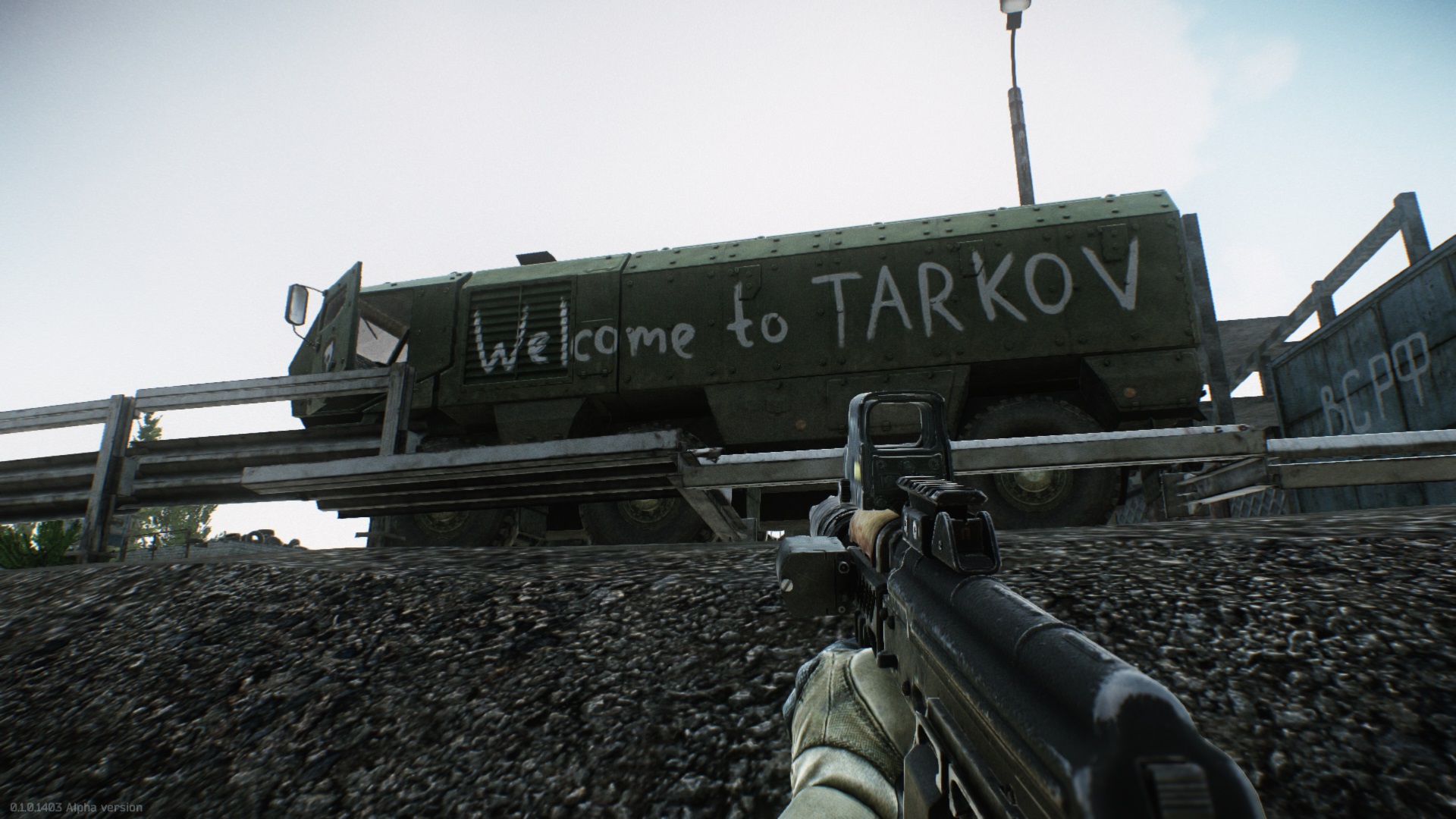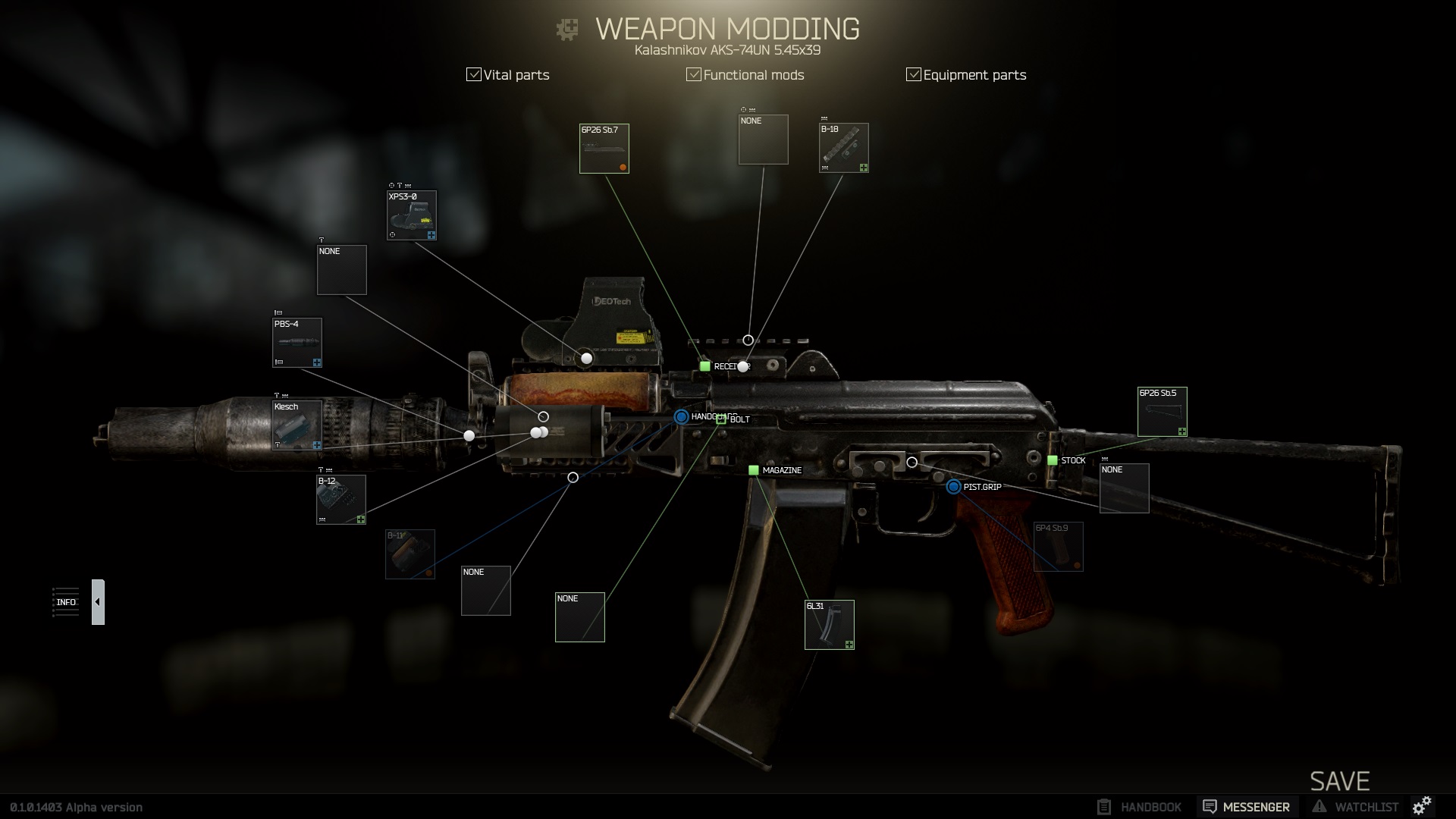Escape From Tarkov wants to be PC gaming's most hardcore FPS
Lured by hints of Stalker, Metro, and DayZ, we go hands-on with the alpha.

Tarkov is having a bad year. Constant war has dragged the entire city into total chaos, and I’m a military contractor trying to get out of Dodge. Spawning inside a dense forest, I see a huge eyeball pressed right up against my face. I yelp and step back. It's my first contact with another player, but I don't know what to do. His eyes are vacant and frozen, the empty character shell loaded by the server while a player joins the game.
I don’t want to spawnkill the guy. “Do unto others,” and all that. Be the change you wish to see in the server. Instead, I run, putting distance between us so we can have a fair chance to have fun.
Hearing a handgun rack, I turn and see the newly-spawned player join the game with a pistol in hand. He’s taking his first baby-bird steps into the world. He turns to face me, child-like, and I shoot him right in the eyes. It was him or me. Welcome to Tarkov, I guess.

Hunger games
The survival genre has exploded since 2012, when DayZ was but a humble Arma 2 mod. The rush came so fast that we were already exhausted and hoping for a swift death to the trend by 2015.
Tarkov has skipped the zombies, but is otherwise DayZ on steroids. There’s no HUD whatsoever. If I want to know how many bullets I have in my magazine, I eject it and count the brass. Fortunately, the art and animation are gorgeous and detailed enough that I can tell if my gun is in semi-auto mode by looking. Instead of the old Arma 2 engine and its many flavors of awkward, Tarkov is smooth and detailed, full of crepuscular rays and dense vegetation.
Instead of full-on permadeath, Tarkov characters have skills and abilities that level up over time.
Unlike DayZ’s single map, the world of Tarkov is divided into neighborhoods. This gives the game an MMORPG end-game raid structure. Players drop into a section of the ruined city and make their way from the starting point to an extraction point somewhere in the heart of the map. Like in DayZ, these neighborhoods are sprawling, open, and full of other players trying to make it out of the instance with more gear than they started with. Abandoned buildings and destroyed military checkpoints are everywhere, and cigarettes, cell phones, cash, and weapons are thick on the ground.

There are no quests. The longer you spend looting, the greater your risk of running into another player who wants to take all your stuff. Players run through levels killing anything that moves and looting everything that doesn’t. If the team survives, they bring their loot out into the meta-game, where they can gear up and modify their guns. If they get killed, though, they lose everything they were carrying.
The biggest gaming news, reviews and hardware deals
Keep up to date with the most important stories and the best deals, as picked by the PC Gamer team.
The use of gear as reward—and the loss of gear as punishment—is the other big change from DayZ. Instead of full-on permadeath, Tarkov characters have skills and abilities that level up over time. They also have a vault full of everything they’ve carried out of a raid. When it’s time to go in again, choosing gear is like making a bet: What do I need to survive, and how much am I willing to lose? For some people, the threat of losing gear they spent hours finding is what made DayZ so much fun. For me, it’s why I had heartburn in 2014.
Physically fit
I don’t want to oversell this, but Tarkov’s attention to physicality may be the best I’ve ever seen in a multiplayer game. When I lie prone, my legs have to go somewhere, so running into a corner and lying down is impossible. Guns also have dimension in space, so moving sideways through a doorway is possible with a pistol, but not a shotgun. Bullet impacts violently throw the camera around in a meaningful way. I never feel like an eyeball floating six feet off the ground, and it’s lovely.
Then there’s the sound design, which is so good it kind of makes me sick. Really—the gurgles and gags of dying men are nauseating. Shots ring out for miles in every direction, and reloading is a symphony of clicks and clacks.
But the sound design isn’t for show. Every firefight in Tarkov starts with a pause and the thought: what was that? The faster I move, the louder I am—and being loud is a tactical decision. Understanding the sounds of the Tarkov environment is a skill to be honed, just like spotting a Ghillie suit hiding in the grass was a skill in DayZ.
Luckily I can be exactly as loud as I want to with granular movement controls. In addition to the standard walk, jog, or sprint, the scroll wheel modifies speed. A fast jog is usually pretty safe for travel, but in stealthy situations I scroll all the way down to an agonizing crawl. Even turning in place while crouched, like swiveling from front to back to watch doorways, makes a scrape-crunch noise that others can hear.
With smooth movement and great sound, Tarkov is a shooter that feels good to play. Well, it 'feels good' in that it makes me feel damn terrible all the time. The threat of death is omnipresent, and my fear of bang-zip-splat death gets my heart pounding in a quick-Doris-call-the-doctor kind of way. I didn’t need more vicious fear gnawing through my guts than I’ve already got, thanks, but every moment playing Escape from Tarkov is a terror. I think I mean that as a compliment, since it’s what they’re aiming at.
Unfriendly skies
Escape from Tarkov is still early in development, and there are some technical glitches. It usually took me around four minutes to connect to a game, and dead servers, dropped connections, and crashes were common. This was especially frustrating when it happened during a raid. In order to keep people from disconnecting under pressure—DayZ’s most obnoxious exploit—leaving a raid immediately forfeits all gear. It's brutal, but it should solve the disconnect exploit. Unfortunately, a game made of 90-120 minute raids that can’t be skipped, paused, or saved isn’t compatible with having kids, pets, spouses, neighbors, emergencies, or server glitches. It's a commitment, and a big one compared to the 30 minutes or less you'll spend in PlayerUnknown's Battlegrounds.
Aside from the glitches, my biggest worry about Tarkov is that it might be unnecessarily harsh—especially for new players. New characters spawn with nothing but an axe and a smile, and unlike DayZ I never found a working firearm in a cargo crate. If an armed player has their head on a swivel, getting close enough to kill them with an will take a lot of luck. Even when players get lucky once, on the next raid their hard-won prize will be a sniper’s whim away from being lost forever.
Lighting across a violent sky was graphically impressive, but it was also so dark I couldn’t see my hands or find anything to loot.
Servers also time through a day/night cycle, and dark nights aren't fun. Gear like nightvision goggles is so out of reach for new players it might as well be fictional. Once, I spawned into The Woods in the middle of a roof-shattering midnight thunderstorm. Lighting across a violent sky was graphically impressive, but it was also so dark I couldn’t see my hands or find anything to loot. I didn’t want to quit because I had a decent pistol with me, so after a few minutes of migraine-inducing eye strain I found a wall, went prone, and left my keyboard to go do something else.
I checked back every few minutes to see if the sun had come up. Eventually someone shot me, but at the time I was in the other room drinking a beer, so I didn’t care. Now if I see that the servers are in the middle of their night cycle, I play something else instead. When I think about my complete avoidance of Tarkov’s nighttime setting, I think about how the tension and terror of DayZ or PlayerUnknown’s Battlegrounds adds teeth to a thrilling hardcore challenge. At its best, Escape from Tarkov can nail that same thrill. It has some serious design talent behind it, but at it’s worst, it’s hardcore for the sake of being hardcore.

